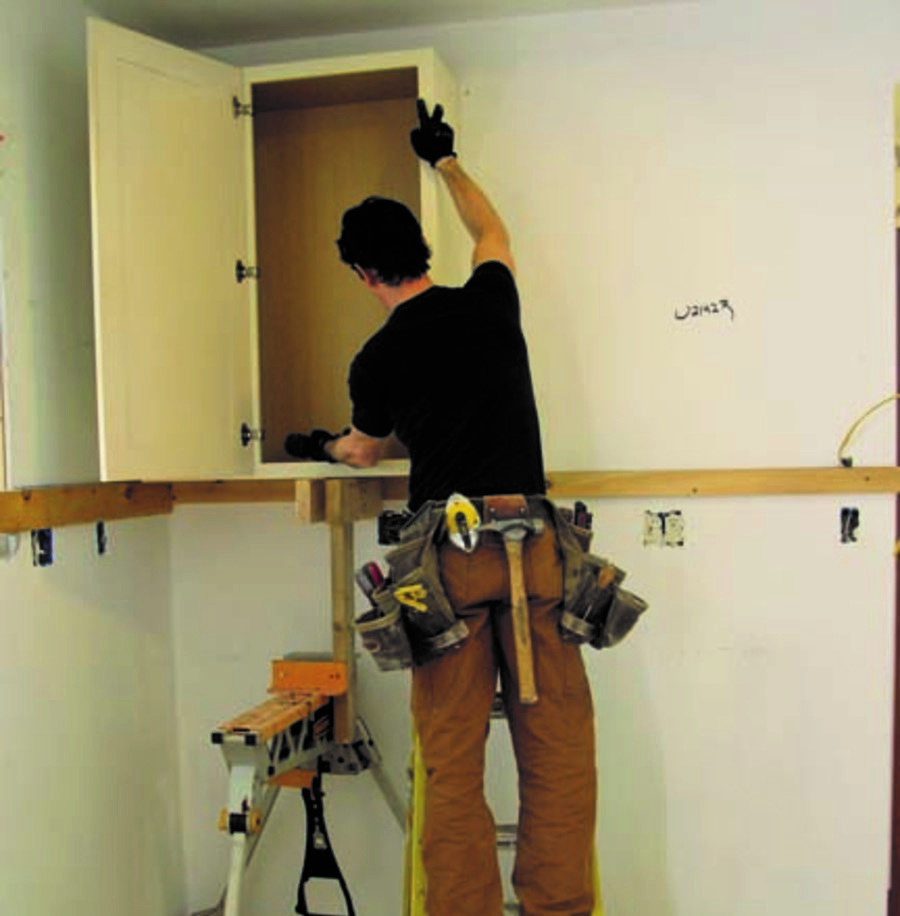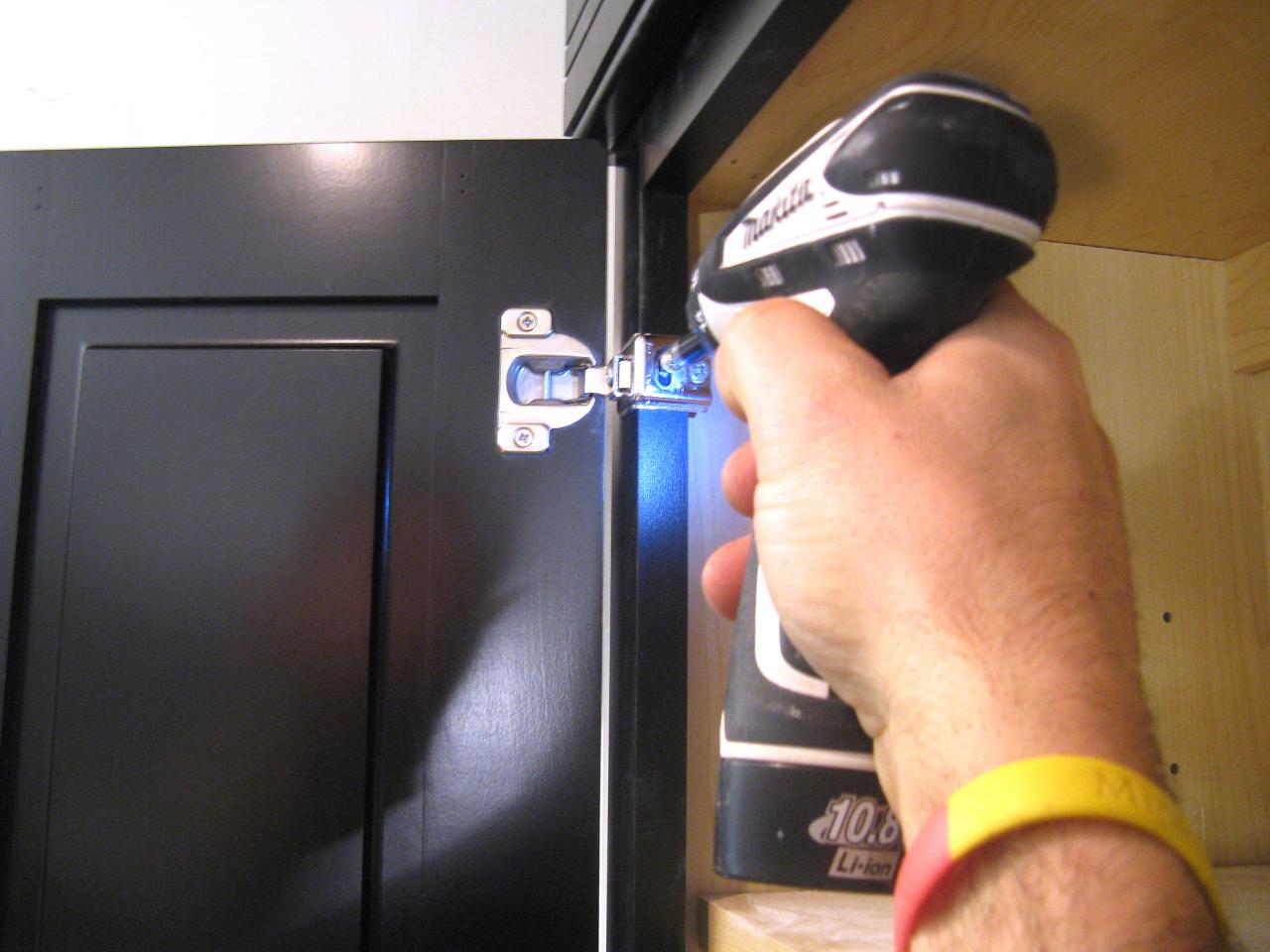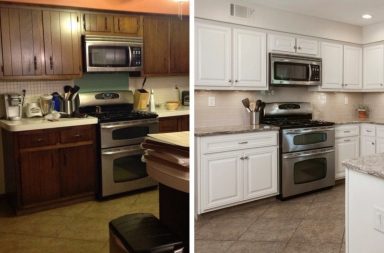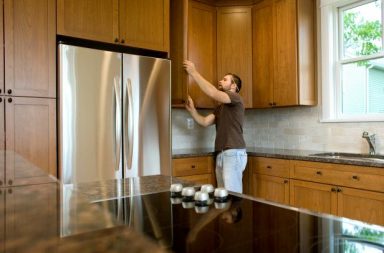Put down the sledgehammer and learn some basics
You need to be careful when removing your old kitchen cabinets, without caution it is all too  easy to rip out parts of the wall with them. There’s usually a bit more than just screws holding the cabinets in place against the wall. Carefully inspect the original installation and take the time to find where each screw is located. Have a utility knife handy to remove any caulk from the edges.
easy to rip out parts of the wall with them. There’s usually a bit more than just screws holding the cabinets in place against the wall. Carefully inspect the original installation and take the time to find where each screw is located. Have a utility knife handy to remove any caulk from the edges.
Especially if it’s your first time installing kitchen cabinets, it’s best to follow standard protocol and go in order of the steps set forth in the instructions accompanying the hardware. Start with the wall cabinets and make your way down to the base. By starting at the top you avoid letting anything get in the way as there’s no shortage of space below the base (as opposed to going from the base up, where your measurements could end up being a fraction off). Also, beginning at a corner will save some time.
First, you need to remove the doors and drawers. Strip down the cabinets before you put them up. Stock cabinets from big box stores often come pre-assembled. So why would you want to remove the doors and drawers? It will make the cabinets lighter and much easier to handle. Be certain to mark every drawer and door and match it to the corresponding cabinet spaces they were originally attached to before you removed them.
You will have to be ready to support the weight of the cabinet. Use cabinet cleats. Installing kitchen cabinets typically requires two people, but if you were to use a one by three or one by two cut of wood to support the overall weight it helps push the cabinet back. Yes, it can fall forward, take all precautions necessary, but thanks to the cut wood pieces it is not slipping and sliding all over the wall.
Locate the studs you intend to use before the installation. If working behind the cabinet, use finish nails – they’re a common and easy accessory to employ for this type of project. Proceed to nail them in.
Plan the cabinets around the kitchen – it’s the best way to effectively add them with no complications. Before you go and order new cabinets, make note of the existing appliances and where the plumbing, sink, gas, refrigerator, electrical outlets, stove, and microwave are intended to be permanent. Knowledge of these will be very important when it comes time to proceed with the installation.
You may have to situate new outlets. For instance, it’s a wise idea to put a receptacle in the cabinet that goes above the microwave. This will allow the microwave to be much easier to fit as you extend the power cord to the cabinet above. Instruct a contractor to install an outlet there if necessary.
Naturally, you want to start high and be certain that everything is level. From the floor, start from the highest point and start leveling, using a  benchmark (a horizontal line that travels around the kitchen’s perimeter). The benchmark can be set at any height, but it is basically a level line that will be measured from and to for the base and wall cabinets.
benchmark (a horizontal line that travels around the kitchen’s perimeter). The benchmark can be set at any height, but it is basically a level line that will be measured from and to for the base and wall cabinets.
If you want level cabinets, shims are needed. You’ll want to purchase them before your installation. They will keep the cabinets in a straight line and are particularly necessary for placement compensation if there’s an unnatural curve in the wall. They vary in thickness from zero to around three-eighths of an inch.
You are going to face a number of gaps but that’s normal. All cabinets come with a scribe or filler piece for where they meet the wall. Most walls are not entirely straight so this encourages a neat finish where any contours in the wall are taken up. And – a piece of scribe keeps the drawers and doors a bit away from the wall, so all the moving parts in the kitchen won’t touch it.
When deciding on fixtures, don’t go the cheap route. Hinges, knobs and drawer slides should be of primo quality. You’ll want durable hardware because moving parts tend to wear with time. A longer life is ensured when you choose items of higher quality.
Do a web search for the best place to buy kitchen cabinets online. You may find some useful RTA cabinet review sites like RTA Cabinet Reviews, and you’ll find all the info you’ll need, from price to size to style. Installing cabinets yourself is a rewarding experience, and you get better every time you do it!


